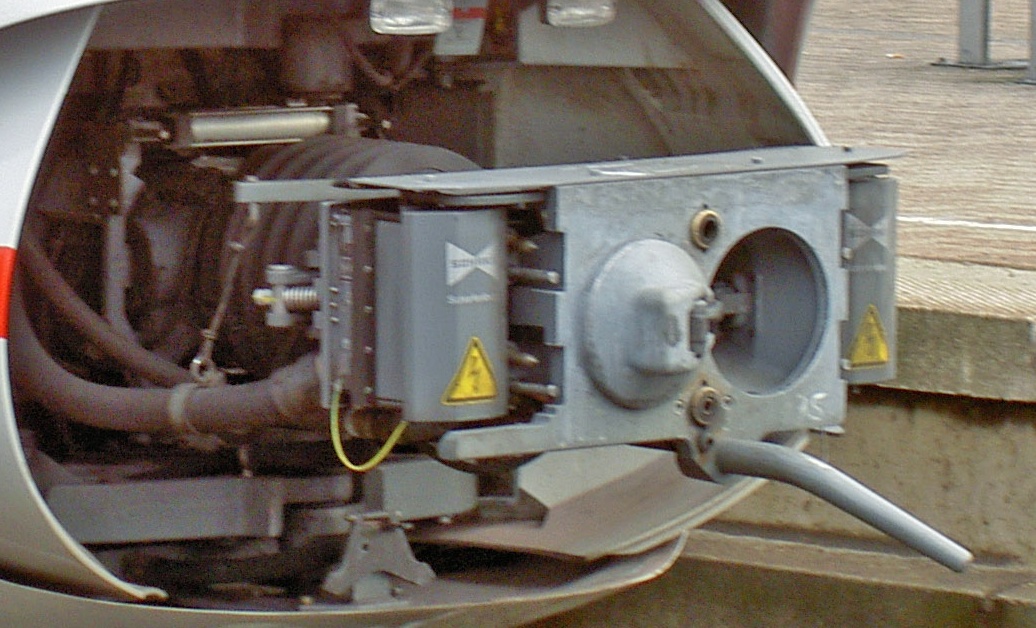|
New Generation Rollingstock
The New Generation Rollingstock (NGR) is a class of individually-propelled carriages (" electric multiple units") manufactured by Bombardier Transportation in Savli, India for the Queensland Rail City network that entered service between December 2017 and December 2019. They are Queensland Rail's largest fleet of electric trains. History In January 2014, the Queensland Government awarded a contract for 75 six-carriage electric multiple units to the Qtectic consortium of Aberdeen Asset Management, Bombardier Transportation, Itochu and John Laing under a 32-year public private partnership. They are the first QR electric multiple units not manufactured in Maryborough by Downer Rail (formerly Walkers). The NGRs were built in Savli, India.New Generation Rollingstock Department of Transport & Main Roads [...More Info...] [...Related Items...] OR: [Wikipedia] [Google] [Baidu] |
Bombardier Transportation
Bombardier Transportation was a Canadian-German rolling stock and rail transport manufacturer, headquartered in Berlin, Germany. It was one of the world's largest companies in the rail vehicle and equipment manufacturing and servicing industry. Bombardier Transportation had many regional offices, production and development facilities worldwide. It produced a wide range of products including passenger rail vehicles, locomotives, bogies, propulsion and controls. In February 2020, the company had 36,000 employees, and 63 manufacturing and engineering locations around the world. Formerly a subsidiary and rail equipment division of Bombardier Inc., the company was acquired by French manufacturer Alstom on 29 January 2021. History 20th century 1970s: Formation and first orders Canadian company Bombardier Inc. entered the rail market in 1970 when it purchased Lohnerwerke GmbH of Austria. Bombardier Transportation's first order for mass transit rolling stock was in 1974 for the ... [...More Info...] [...Related Items...] OR: [Wikipedia] [Google] [Baidu] |
Scharfenberg Coupler
The Scharfenberg coupler (german: Scharfenbergkupplung, abbreviated ''Schaku'') is a commonly used type of fully automatic railway coupling. Designed in 1903 by Karl Scharfenberg in Königsberg, Germany (today Kaliningrad, Russia), the coupler has gradually spread from transit trains to regular passenger service trains, although outside Europe its use is generally restricted to mass transit systems. The ''Schaku'' is superior in many ways to the AAR (Janney/knuckle) coupler because it also automates electrical and pneumatic connections and disconnections. However, there is no standard for the placement of these electro-pneumatic connections. Some rail operators have placed them on the sides while others have placed them either below or above the mechanical portion of the coupler. . Working principles The face of the Scharfenberg coupler has a protruding cone and a matching cup. Inside the cone there is a rigid metal hoop connected to a revolving, spring-loaded metal disk with a ... [...More Info...] [...Related Items...] OR: [Wikipedia] [Google] [Baidu] |
Electric Tilt Train
The Electric Tilt Train is the name for two identical high-speed tilting trains operated by Queensland Rail on the North Coast line from Brisbane to Bundaberg and Rockhampton which entered service in November 1998. History In March 1993, Queensland Rail issued a tender for the construction of two electric six-carriage tilting trains. In October 1994, a contract was awarded to Walkers, Maryborough with Hitachi to supply the electrical and tilting equipment. After an extensive program, on 6 November 1998, Australia's first pair of tilting trains entered service on the ''Spirit of Capricorn'' between Brisbane and Rockhampton. With a journey time of seven hours, they shaved over two hours from the schedule operated by InterCity Express sets. In July 1999, a second daily service was introduced between Brisbane and Bundaberg. Using traction equipment based on the JR Shikoku 8000 series trains, the Tilt Train set an Australian train speed record of north of Bundaberg in May ... [...More Info...] [...Related Items...] OR: [Wikipedia] [Google] [Baidu] |
Fraser Coast Chronicle
The ''Fraser Coast Chronicle'' is an online newspaper serving the Fraser Coast area in Queensland, Australia. It was started as the Maryborough Chronicle, Wide Bay and Burnett Advertiser. History Charles Hardie Buzacott first published the ''Maryborough Chronicle, Wide Bay and Burnett Advertiser'' in Maryborough as a four-page tabloid, in his slab hut in Lennox Street in November 1860. It sold for sixpence and was read from Gayndah in the west and Childers in the north to Gympie in the south. In 1863, Buzacott sold his interests to William Swain Roberts and Joseph Robinson, who set out to "reflect the community's wants and opinions while boldly and distinctly enunciating our own views". As the rough river town turned into a respectable city, its newspaper became a bi-weekly in 1864, a tri-weekly in 1868 and a daily in 1882. In 1867, Roberts became sole proprietor and managing editor. A Scot, Andrew Dunn from Toowoomba, joined the ''Chronicle'' in 1885, beginning a long assoc ... [...More Info...] [...Related Items...] OR: [Wikipedia] [Google] [Baidu] |
Walkers Limited
Walkers Limited was an Australian engineering company, based in Maryborough, Queensland. It built ships and railway locomotives. The Walkers factory still produces railway locomotives and rolling stock as part of Downer Rail. History In 1863 John Walker and three friends set up the ''Union Foundry'' of John Walker & Co in Ballarat. In 1867 a branch was opened in Maryborough. The Ballarat assets were disposed of in 1879 and in 1884, the business became a limited company under the title ''John Walker & Co Limited'', being renamed ''Walkers Limited'' in 1888. The company produced most of the parts for machinery at sugar mills. In 1980 Walkers Limited was sold to Evans Deakin Industries. It was included in the purchase of Evans Deakin by Downer Group in March 2001 and today the Maryborough factory continues to operate as part of Downer Rail. In 2003 Bundaberg Foundry Engineers completed the acquisition of the Walkers Sugar Business and moved to change the operating na ... [...More Info...] [...Related Items...] OR: [Wikipedia] [Google] [Baidu] |
Downer Rail
Downer Rail is a business unit within the Downer Group. As well as manufacturing and maintaining railway rolling stock it holds maintenance contracts to maintain rail infrastructure. The head office is located in North Ryde. History The EDI Rail division was formed in March 2001 following the merger of Evans Deakin Industries and Downer Group to form Downer EDi. In July 2007 the division was renamed Downer Rail and in 2018 it merged with Downer's Infrastructure Services division to form Transport and Infrastructure. The history of Downer Rail began in 1867 when Walkers Limited opened a branch in Maryborough. In 1980 Walkers Limited was sold to Evans Deakin Industries and included in the merger with Downer EDi. Evans Deakin operated the former Clyde Engineering plants at Kelso and Somerton and Walkers Limited, Maryborough plant. It had recently reopened the former Cardiff Locomotive Workshops to build CityRail M sets. In 2008 Locomotive Demand Power was establis ... [...More Info...] [...Related Items...] OR: [Wikipedia] [Google] [Baidu] |
Maryborough, Queensland
Maryborough ( ) is a city and a suburb in the Fraser Coast Region, Queensland, Australia. At the 2021 Census, Maryborough had a population of 15,287. Geography Maryborough is located on the Mary River in Queensland, Australia, approximately north of the state capital, Brisbane. The city is served by the Bruce Highway. It is closely tied to its neighbour city Hervey Bay which is approximately northeast. Together they form part of the area known as the Fraser Coast. The neighbourhood of Baddow is within the west of the suburb near the Mary River. It takes its name from Baddow House, a historic property in the area (). Baddow railway station () and Baddow Island () in the Mary River also take their names from the house. History Original inhabitants, language and culture Evidence of human inhabitation of the Maryborough region stretches back to at least 6,000 years ago. The Gubbi Gubbi (Kabi Kabi) and Batjala (Butchulla) people were the original inhabitants of ... [...More Info...] [...Related Items...] OR: [Wikipedia] [Google] [Baidu] |
Railway Digest
''Railway Digest'' is a monthly magazine, published in Sydney, covering contemporary railways of Australia. Overview The magazine's publisher is the Australian Railway Historical Society (ARHS), NSW Division. The first issue was published in March 1963 under the name ''New South Wales Digest'' and regular publication commenced with the May 1963 edition. It was renamed in January 1983. In January 1985 it changed paper size from SRA5 to A4. Originally an enthusiast magazine mainly focusing on reporting day-to-day workings of the New South Wales Government Railways and it successors, it was produced by volunteers using a hand-operated duplicator at the home of one of its members. In May 1993, a paid editor was appointed and the magazine's focus gradually shifted to reporting news from across Australia. It has evolved into a professional full-colour production directed at the wider community and commercially distributed to newsagents throughout Australia."Adapt or disappear - ... [...More Info...] [...Related Items...] OR: [Wikipedia] [Google] [Baidu] |
Public Private Partnership
In public relations and communication science, publics are groups of individual people, and the public (a.k.a. the general public) is the totality of such groupings. This is a different concept to the sociological concept of the ''Öffentlichkeit'' or public sphere. The concept of a public has also been defined in political science, psychology, marketing, and advertising. In public relations and communication science, it is one of the more ambiguous concepts in the field. Although it has definitions in the theory of the field that have been formulated from the early 20th century onwards, and suffered more recent years from being blurred, as a result of conflation of the idea of a public with the notions of audience, market segment, community, constituency, and stakeholder. Etymology and definitions The name "public" originates with the Latin ''publicus'' (also '' poplicus''), from ''populus'', to the English word ' populace', and in general denotes some mass population ("the ... [...More Info...] [...Related Items...] OR: [Wikipedia] [Google] [Baidu] |
John Laing Group
John Laing Group plc is a British investor, developer and operator of privately financed, public sector infrastructure projects such as roads, railways, hospitals and schools through Public-Private Partnership (PPP) and Private Finance Initiative (PFI) arrangements. It was listed on the London Stock Exchange and was a constituent of the FTSE 250 Index until the court approved the acquisition of the company by KKR in September 2021. History The business can trace its roots back to 1848 when James Laing (born in 1816), along with his wife Ann Graham, and some employees whom they had hired, built a house on a plot of land that they had bought for £30 in Cumberland. The £150 proceeds from the first house financed the building of the next two houses on the same plot of land, one of which (Caldew House in Sebergham) was kept by the Laing family to live in. The family and the business later moved near Carlisle. When James Laing died in 1882, his son, John Laing (born in 1842) took o ... [...More Info...] [...Related Items...] OR: [Wikipedia] [Google] [Baidu] |
Itochu
is a Japanese corporation based in Umeda, Kita-ku, Osaka and Aoyama, Minato, Tokyo. It is one of the largest Japanese ''sogo shosha'' (general trading companies). Among Japanese trading companies, it is distinguished by not being descended from a historical ''zaibatsu'' group, but by the strength of its textile business and its successful business operations in China. It has seven major operational divisions specializing in textiles, metals/minerals, food, machinery, energy/chemicals, general products/real estate, and ICT/financial business. Itochu was ranked 72nd on the 2020 list of Fortune Global 500 companies, with an annual trading revenue of US$100 billion. Itochu has been one of the most popular employers for graduates of top Japanese universities for over thirty years due to their high pay levels, stability and the diversity of opportunities available to employees. In 2019 and 2020, Itochu was ranked the most popular employer for college graduates. History Pr ... [...More Info...] [...Related Items...] OR: [Wikipedia] [Google] [Baidu] |



.png)
.jpg)
..jpg)
.jpg)

